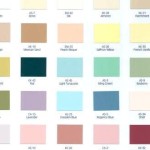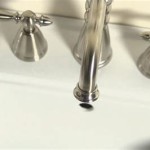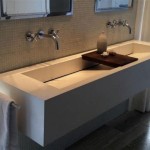Granite and Marble Bathroom Vanity Tops: A Comprehensive Guide
Bathroom vanity tops are a crucial element in bathroom design, influencing both the aesthetic appeal and functionality of the space. Among the myriad of countertop materials available, granite and marble remain consistently popular choices, prized for their natural beauty, durability, and timeless elegance. This article provides a comprehensive overview of granite and marble bathroom vanity tops, exploring their key characteristics, advantages, disadvantages, maintenance requirements, and factors to consider when selecting the ideal material for your bathroom.
The selection of vanity top material directly affects the overall look and feel of a bathroom. Granite and marble, as natural stones, offer unique veining, color variations, and textural qualities that bring a sense of luxury and sophistication. Beyond aesthetics, the durability and resistance to water and heat are paramount for a bathroom setting, where spills and temperature fluctuations are commonplace. Understanding the specific properties of each stone is essential for making an informed decision that aligns with both personal preferences and practical needs.
Aesthetic Properties and Variations
Granite and marble, despite both being natural stones, possess distinct visual characteristics that influence their suitability for different bathroom styles. Granite, an igneous rock formed from slowly cooling magma, generally exhibits a granular texture with visible crystals of various minerals. This composition gives granite a speckled or swirled appearance with a wide range of color options, including shades of gray, black, white, brown, red, green, and blue. The veining patterns in granite are typically less pronounced compared to marble, creating a more uniform and consistent look.
Marble, on the other hand, is a metamorphic rock formed from limestone or dolostone. Its characteristic veining patterns are caused by mineral impurities present during the metamorphic process. Marble is typically associated with a smooth, polished surface and a more elegant and refined appearance than granite. While white and gray marbles are the most common, varieties exist in hues of black, green, pink, and brown, each with unique veining patterns that add character and depth.
The aesthetic choice between granite and marble is subjective and depends on the desired style of the bathroom. Granite offers a more contemporary or rustic feel due to its speckled texture and less dramatic veining. It complements modern, transitional, and farmhouse-style bathrooms. Marble, with its smooth surface and elegant veining, lends itself to more traditional, classic, or luxurious bathroom designs. The specific color and pattern of the chosen slab will further dictate the overall aesthetic impact. For example, a dark granite with minimal veining can create a sleek and modern look, while a white marble with intricate veining can evoke a sense of timeless elegance.
Durability, Porosity, and Maintenance
The durability and porosity of granite and marble are critical factors to consider for bathroom vanity tops, as these properties directly impact their resistance to staining, scratching, and water damage. Granite is generally considered more durable and less porous than marble. Its dense structure makes it highly resistant to scratches, chips, and heat. The low porosity of granite also makes it less susceptible to staining from common bathroom substances like soap, shampoo, and cosmetics.
Marble, being a softer and more porous stone, is more prone to scratching and staining. While marble can withstand heat, it is more susceptible to damage from acidic substances, such as vinegar, lemon juice, or cleaning products containing harsh chemicals. These acids can etch the surface of the marble, causing dull spots or permanent discoloration. Therefore, careful maintenance and the use of pH-neutral cleaning products are essential for preserving the beauty of marble vanity tops.
To mitigate the porosity of both granite and marble, sealing is crucial. Sealing involves applying a penetrating sealer to the stone's surface, which fills the pores and creates a barrier against water and stains. Granite generally requires sealing less frequently than marble, typically every one to three years, depending on the type of granite and the frequency of use. Marble, being more porous, requires sealing more frequently, often every six months to one year. Regular cleaning with a pH-neutral cleaner and prompt removal of spills are also essential for maintaining the appearance and longevity of both granite and marble vanity tops.
Cost Considerations and Installation
The cost of granite and marble vanity tops can vary significantly depending on the quality of the stone, the complexity of the fabrication, and the installation costs. Generally, marble tends to be more expensive than granite. The price of both materials is influenced by factors such as the rarity of the color, the intricacy of the veining patterns, and the origin of the stone. Exotic granites and marbles with unique colors and patterns command higher prices than more common varieties.
Fabrication costs involve cutting the stone to the desired dimensions, shaping the edges, and creating cutouts for sinks and faucets. Complex edge profiles, such as ogee or bullnose edges, can increase fabrication costs. The installation process requires skilled professionals who can properly level the vanity top, secure it to the cabinet, and seal the edges to prevent water damage. Improper installation can lead to cracks, leaks, and other problems that can compromise the integrity of the vanity top.
When budgeting for granite or marble vanity tops, it is essential to obtain multiple quotes from different fabricators and installers. Comparing prices and services will ensure that you are getting the best value for your investment. It is also important to factor in the cost of sealing and regular maintenance when considering the long-term cost of ownership. While the initial cost of granite or marble can be higher than other countertop materials, their durability and timeless appeal can make them a worthwhile investment that adds value to your home.
The selection of granite or marble for bathroom vanity tops involves a careful consideration of aesthetic preferences, durability requirements, maintenance capabilities, and budgetary constraints. Both materials offer unique advantages and disadvantages that should be weighed against individual needs and priorities. By understanding the key characteristics of each stone, homeowners can make an informed decision that results in a beautiful, functional, and long-lasting bathroom vanity top.
:strip_icc()/102227038-7f5a5ef7c99948bd817d94db91e36084.jpg?strip=all)
18 Luxurious Bathroom Countertop Ideas For All Budgets

A Gray And White Marble Bath Vanity Top Choosing Bathroom Countertops Best Vanities Granite

Choosing Bathroom Countertops Quartz Granite Or Marble

Cararra Marble Bath Surround With Matching Vanity Top Traditional Bathroom London By Granite Supply Ltd Houzz

Granite Bathroom Vanity Tops Make The Perfect Countertop

Beautiful Bathroom Countertop Designs For A Luxurious Look Homes

7 Sy Bathroom Countertop Options To Choose From

Modern Bathroom Countertops Vanities In Albany Ny

Natural Granite Bathroom Vanity Tops Wolf Home S

Granite Bathroom Design Ideas Best Designs In 2024 Marble Com
Related Posts







